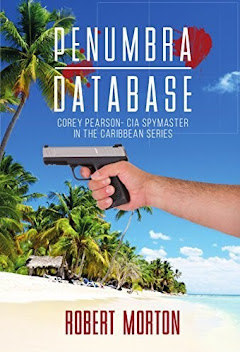 |
| Deep cover. Silent chase. One shot to stop the unthinkable… or watch the world change forever. |
When you're chasing the kind of threats that
could level a city or turn a population into a morgue—bioweapons, suitcase
nukes—you don’t count on just satellites and phone taps. That’s rookie stuff.
The CIA plays a deeper game. They embed people. Real operators. Folks who
vanish into the noise and don’t come up for air until they’ve got something
worth listening to. Most Americans have no idea these missions are
happening—and that’s exactly how Langley wants it. Tucked deep inside the
Agency is a tight-knit unit that doesn’t just watch for disaster. They sniff it
out before it has a name. Before it has a chance to strike.
This isn’t James Bond. It’s far more
complex and far less glamorous. The division tasked with tracking biological
and nuclear threats is the CIA’s Directorate of Operations, specifically within
its Counterproliferation Division. These officers don’t wear capes. They pose
as businesspeople, energy consultants, or NGO workers. Their job is to trace
the movements of lethal technologies—whether it’s vials of genetically modified
viruses or highly enriched uranium that’s quietly disappeared from a stockpile in
a politically unstable country.
One of the more famous real-life examples
is Valerie Plame. She wasn’t some desk jockey. She was deep cover—so far under,
even other operatives didn’t know her name. On paper, she was just another suit
at BJ and Associates, some boutique energy consulting firm. In reality? That
company was a CIA front, and Valerie was hunting nuclear black-market
players—the kind of scum who’d trade enriched uranium like it was Bitcoin.
She worked the rooms, shook the right
hands, played the long game. Scientists, diplomats, arms brokers—they all
thought they were talking shop with a legit energy consultant. What they didn’t
know was she was tracking every move, every whisper, every deal. She built
profiles, mapped networks, and fed critical intelligence back to Langley. And
when she connected the dots, those dots often led straight to people you really
don’t want getting their hands on a bomb.
This kind of fieldwork, the kind that
Valerie did, is at the heart of the spy thriller Shadow
War. In the novel, CIA operative Corey
Pearson and his team aren’t chasing ghosts—they’re piecing together fragments:
intercepted communications, strange meetings in forgotten corners of Europe,
and odd patterns in diplomatic chatter. What they uncover is chilling: a
Russian sleeper cell on U.S. soil, orchestrating a biological attack. But the
true nature of the threat keeps shifting. Is it viral? Is it nuclear? That
ambiguity, drawn straight from how real-world intel works, fuels the novel’s
tension.
Let’s talk suitcase nukes for a second.
Officially, the existence of man-portable nuclear weapons—something the size of
a backpack or small trunk—is a murky subject. Some say the Russians built them
during the Cold War. Others claim many have gone missing. The terrifying part?
Even one such device, smuggled through a port or across a remote border
crossing, could flatten part of a city.
CIA counterproliferation teams have long
treated the threat seriously, monitoring rogue states and shady arms dealers
who might trade in compact nuclear tech. They run covert ops in unstable
regions, track bank transfers that don’t add up, and use human assets to get
inside conversations no satellite can hear.
Biological threats are trickier in some
ways. Unlike a nuke, you don’t need heavy metal or fissionable material. You
need a lab, some know-how, and a virus that can spread before anyone realizes
what's going on. That's why the CIA collaborates heavily with scientists and
epidemiologists. Analysts pour over disease patterns, and operatives keep tabs
on rogue virologists, shell labs, and biotech purchases in unexpected
countries. During the height of bird flu, and later, COVID, the focus on
weaponized viruses quietly intensified.
In Shadow War, the threat
feels all too real because it reflects the way these risks bleed into each
other—dirty bombs mixed with genetically engineered viruses, misinformation
campaigns meant to delay response times, and operatives trained to exploit
chaos. Corey Pearson’s race against time isn’t far from what real CIA teams
face when clues are scarce and the stakes couldn’t be higher.
The CIA doesn’t brag. When they score a
win, it’s usually buried so deep you’d need a backhoe to find it. The public
never hears about it. A shady deal falls apart last minute. A rogue scientist
vanishes off the grid. A container flagged for inspection just happens to never
leave port. No headlines. No press briefings. Just silence.
But that silence? That’s where the real
work lives. These are the hits that never make the news—but they keep the
country standing. A virus tucked inside a crate labeled medical supplies, a nuclear
device traded like contraband art—stopping these threats demands a mix of
intellect, instinct, and relentless pursuit.
What Shadow War gets right
isn’t just the action—it’s the atmosphere. That pressure-cooker sense of
chasing shadows, never knowing whether what you’re hunting is real until it’s
nearly too late. It’s fiction, yes, but it mirrors a truth we’d all rather not
think about: the threats are real, and somewhere out there, someone is working
to keep them from becoming our next headline.
Robert Morton is a member of the Association of Former Intelligence Officers (AFIO) and writes the Corey Pearson- CIA Spymaster series, which blends his knowledge of real-life intelligence operations with gripping fictional storytelling. His work offers readers an insider’s glimpse into the world of espionage, inspired by the complexities and high-stakes realities of the intelligence community.






No comments:
Post a Comment